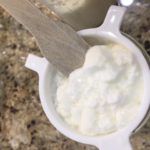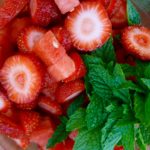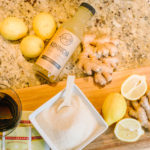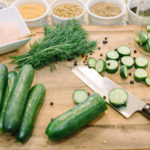Frequently asked questions
Here are some of the most frequently asked questions I get when it comes to fermenting. This is a great place to start before embarking on your Cultured Life Journey.
From ‘what kind of tea to use’ to ‘what is a SCOBY’…You will find the answers to your questions here to help you achieve fermentation success!!
Be sure to please scroll down and join our mailing list. You will get our FREE How to Make Kefir Quick Start Guide delivered right to your inbox.
Fermentation is nothing new. In fact it’s been around for thousands of years but has recently started to make a comeback. It is a natural process of preserving food. Food is exposed to bacteria and yeast, either naturally through the air or by inoculation. These microorganisms then convert sugars to alcohol (alcoholic or ethanol fermentation) or lactic acids (lacto fermentation) under anaerobic conditions, meaning no oxygen.
SCOBY stands for Symbiotic Colony/Culture of Bacteria and Yeast. It is used in brewing Kombucha and is a firm disc like organism or “mother”. New (baby) scoby’s grow at the top of each fresh batch of Kombucha that can be shared with friends and family. The more brews with each SCOBY, the thicker it gets as they layer on each other.
There are many varieties, but Black or Oolong tea are good choices. Avoid herbal teas or ones with artificial flavorings or sweeteners. They are not good for the health of the SCOBY.
I still tend to use these words interchangeably, however, there is a difference. In the world of fermentation, if you use a starter culture (like whey, a SCOBY, or powdered starter), then it is considered “cultured” even though it still goes through the fermentation process. Think Kombucha, Kefir or any vegetable you use a starter with. Fermentation done without a starter is usually referred to as Wild Fermentation. Think sauerkraut.
Besides the obvious in the name, they also use different grains. Milk grains feed on the lactose in milk, while water grains feed on sugar water. These beverages are completely different in how they’re made and how they taste. If you are vegan and choose not to use dairy, then water kefir is a great option.
A second ferment is done after the initial fermentation process. With Kefir and Kombucha, once you remove the grains and/or SCOBY, then it will be ready to be flavored to your liking. Once flavored, you allow the beverage to sit out for hours to days to “second ferment” which allows it to continue to feed on the fruit sugars and create more of the desirable fizz.
There are a couple schools of thought, but what I’ve found works the best is putting the grains to “bed”. That means I put them in a small mason jar with organic milk (to feed them) with a plastic lid and put them in the refrigerator. Depending on the length of time you are gone, depends on how much milk you should supply the grains. If you’re gone for the weekend, a pint sized mason jar is plenty. If you will be gone for a couple of weeks, I would use a quart-sized jar so there is plenty of milk to keep the grains happy. If you return and choose not to make kefir, just strain the grains and give them fresh milk.
A SCOBY hotel is a great way to store your SCOBY if you want to take a break or if you have too many to give away to friends or family. Get a glass vessel (not plastic) big enough for our SCOBY’s to lay flat. (I use the same size vessel that I brew in since the SCOBY’s grow to fit the size). Take the SCOBY from your recent batch of Kombucha and place in the glass vessel. Fill the vessel with 50% Kombucha and 50% tea/sugar mix to the hotel. Cover with a linen and tight rubber band to keep out the flies and critters. Let it sit out of direct sunlight. As time goes on and the fluid level evaporates, you will need to add more liquid. I like to add more filtered water, kombucha and/or tea-sugar mix every couple of months to feed them. Your hotel will keep growing new SCOBY’s. Just push them down below the air-fluid line and break the seal so the other SCOBY’s will get more oxygen.
There are many creative ways of doing this. I like simple. I use glass discs or pebbles to keep my veggies below the brine. They are easy to keep clean and fit a wide-mouthed mason jar perfectly.






